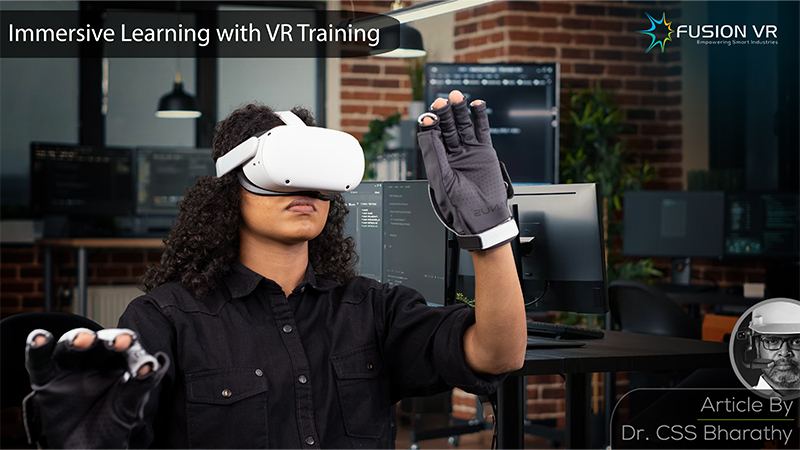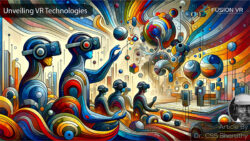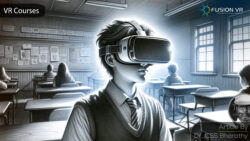Education is every nation’s highest priority as it provides the ability to transform the future of its citizenry. Governments, both past and present, try to develop and implement policies that enable the transformation needed in its education sector. They cover the entire range from primary to tertiary education. The education industry is quite a dynamic one that closely monitors the trends in various industries in the economy and introduces a wide range of courses to meet the potential demand for skilled professionals. Along with these changes, the education industry and educators are also looking at how to redefine education and deliver improved learning outcomes. The education sector has always demonstrated itself as a rapidly evolving field and has quickly adopted changes in pedagogy, technology and the changing needs of society.
The 21st century has ushered in the Fourth Industrial Revolution. This is commonly referred as Industry 4.0 and is enabling a transformative shift in many sectors. Of the many technologies that make a part of Industry 4.0, there is one technology that stands out for enhancing human potential. This is called Virtual Reality (VR) and it is also driving a transformative shift in the field of education and training. Virtual reality courses are rapidly gaining in popularity as they are proving their effectiveness in delivering the desired learning outcomes. Virtual reality was once considered science fiction and too expensive to use. However, that image of VR has changed in the past decade, due to various improvements in the technology and its adoption by the gaming industry to deliver immersive gaming experiences.
Virtual Reality has emerged as a powerful tool that is redefining the way we learn and also teach. Virtual reality technology creates a three dimensional computer-generated virtual environment which is immersive and interactive. It requires the use of a headset that completely covers the eyes and cuts off the person from the surrounding physical reality. The user gradually adapts to this virtual environment as virtual reality enables six degrees of freedom which makes the human brain believe that it can navigate with complete freedom. Virtual reality has advanced to an extent that it is now affordable to integrate its use in classrooms. Virtual reality education is four times faster than traditional learning approaches and scores high on delivering competence and confidence to its students.
Let’s look at traditional classrooms in our schools and universities, in which learning is directed from a teacher or lecturer. One of the major criticisms of the traditional approach is that it is not interactive, engaging and dictates one pedagogical approach to all students. Class engagement and ensuring positive learning outcomes for each student is not achievable considering the class size. Individual attention is certainly impossible, particularly in the classroom environment in India.
Virtual reality is redefining the classroom experience by creating immersive environments that enable students to perform activities and gain skills needed that may be too expensive to perform in the real world. Experiments and activities can be simulated to help them learn concepts by actually doing them. This approach does not cost as everything is done virtually. The activities can be repeated until the required understanding is achieved. Virtual reality education can be designed to learn the world inside and outside us. They can travel to places far away, perform experiments, see how the heart works, walk alongside wild animals, travel back in time and much more, virtually and yet derive an experience that feels completely real.
The engagement of students and the learning they obtain is hands-on, which enhances retention and understanding. Creating muscle memory ensures favorable repetitive outcomes and such learning experiences typically deliver outcomes that often last a lifetime. Another key aspect of VR based learning approaches is that it’s individualized and allows the student to learn at their own pace. A self driven approach to explorative, experiential learning delivers improved learning outcomes in comparison to traditional, classroom based rote learning methods. While we know that learning retention is high with VR learning, it also promotes problem solving and critical thinking. There is a rapid ongoing adoption of VR learning in the field of medical education. Exploring the anatomy of a human body through detailed drawings provides only a two dimensional approach to learn about an organ, cell or tissues in our body. VR training allows the student to learn in an immersive 3D environment which replicates a hands-on learning experience.
VR based learning assumes significant importance in developing understanding and skills that are critical to human society. For example, VR training enables medical students and surgeons to train on life critical diagnoses and procedures. This training is provided for students in nursing, dental and medical streams. The training provided by VR simulations focuses on resuscitation, complex procedures, post surgical and acute care management processes. Imparting such training using conventional approaches is time consuming and very expensive. Virtual reality courses provide a superior alternative to traditional learning methods at a fraction of the cost and time.
Another key aspect of VR training courses is the ability to provide greater access and enable equity to all sections of the society. The technology can be accessed from anywhere in the world and takes it to the most disadvantaged sections of society without any significant investment. The building and lab infrastructure can be minimized and the capital funds allocated for such can be utilized for more value adding initiatives. VR training can be customized to accommodate various learning styles and disabilities.
The promise of VR training is not without its challenges. The ecosystem to develop VR solutions also needs to have a supporting system that trains and equips VR developers through VR development courses and VR certification programs. One of the reasons why India is an IT services powerhouse is that its leaders saw the importance of computer and engineering education early and invested in those areas. Similarly, the potential of VR can be fully exploited only if the talent to create VR solutions is groomed accordingly. Along with this, we also need educators to modify existing curriculum, by including VR educational modules, VR design courses etc. and integrating it effectively within the curriculum. Policy level initiatives and incentives from the government that promote the use of VR and programs to learn virtual reality are implemented.
Fusion VR is a leader in providing VR and AR certification courses and has partnered with ARK Info Solutions Pvt. Ltd to create the Industry Academic Alliance Program (IAAP). This program is helping to set up Extended Reality (XR) academic partnerships, training and research opportunities with several colleges and universities in India. The larger goal of this initiative is to build the necessary skills and create employment opportunities for the vast number of engineering and science students graduating from our universities with the skills needed for placement in the VR, AR & MR domains.
As you can see Virtual reality courses are spearheading the effort to redefine education in the 21st century. Virtual reality education and training courses are transforming existing learning approaches and addressing the challenges inherent in traditional classroom based learning and access to quality resources. The immersive and interactive nature of VR promotes high levels of student engagement and makes high quality education accessible to all students and societies. VR education is on track to further democratize education and enable society to make sustainable progress in the coming decades. We at Fusion VR are proud to be part of the VR ecosystem in India and enthusiastically partner in the development of VR education.





